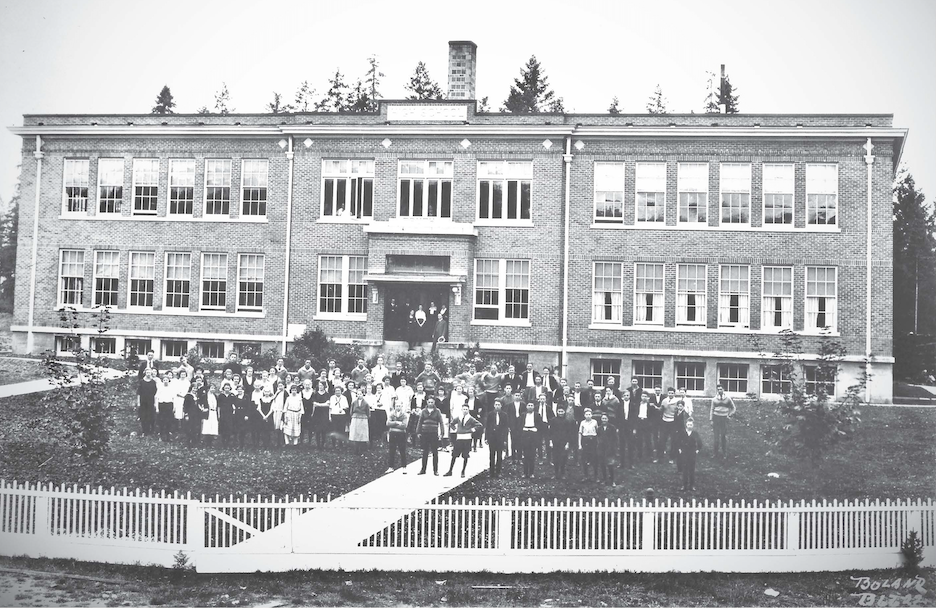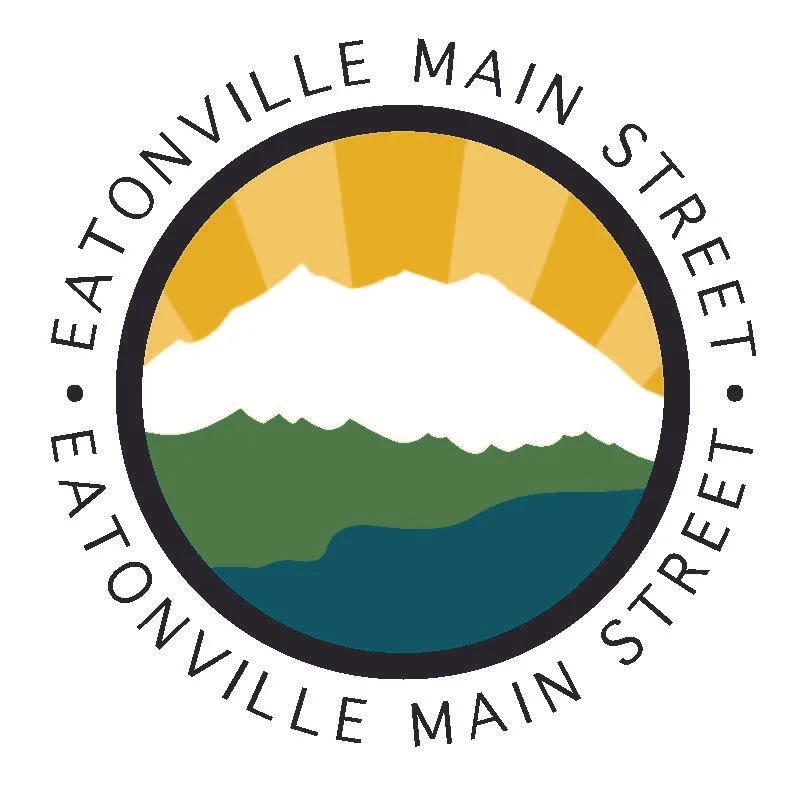-

Eatonville High School
-

Eatonville Methodist Church
-

Eatonville's First Movie Theater
-

Christensen's Department Store
-

Eatonville's Bridge Hospital
-

Eatonville State Bank
-

The Roxy Movie Theatre
-

Tofu House and Van Eaton Cabin
Eatonville Historic Walking Tour
Eatonville has grown from a life-sustaining river community to a celebrated stop along the road to Mount Rainier. We invite you to discover a few of the wonderful reasons we cherish our hometown.
On this self-guided walking tour of the original main street, we welcome you to follow our story, the path of our history, and the people who have called Eatonville home, this community in the foothills of Tahoma.
The Nisqually Tribe was one of many Coast Salish tribes that for millennia, foraged and hunted through the lowland prairies and upland forests. Native communities developed a complex system of trails to travel throughout the area; fishing, hunting, gathering, trading and intermarrying with neighboring tribes. They moved their villages with the cycle of the seasons, living on all that the land had to offer.
One such person was Soo-Too-Lick, later to be known by local settlers as Indian Henry. His tribal origin was uncertain, believed to be of Nisqually, Yakama, or Klickitat origin. However, Indian Henry came to make his home on the Mashel Prairie, west of Eatonville, living among the Nisqually in the mid 1860s. He knew the area and system of trails intimately, and served as a capable and trusted guide of the early explorers of Tahoma (Mt. Rainier) including James Longmire, Philemon Van Trump, John Muir, and others. Unfortunately, there are no known photographs of Indian Henry, just the recorded history and his grave site in the Mashel Prairie Indian Cemetery just outside Eatonville.
While not the first settler in the area, Thomas Cobb (T.C.) Van Eaton, a new arrival from the Midwest, made his way to the foothills in 1889, determined to plat a town. It was Indian Henry who led Van Eaton to the wide bench of forested land near a river, the place that would become Eatonville. Van Eaton built a small cabin which served many purposes over time, becoming a trading post, stage stop, a general store and a post office.
The abundance of resources, including water for power and extensive timber, enabled Eatonville to grow into a bustling town. With support from the Weyerhaeuser Company, which had acquired substantial timber holdings in the area, the Tacoma Eastern Railroad pushed a route through from Tacoma to Eatonville in 1903. The railroad provided ease of access for not only transportation of timber and goods but enabled Mt. Rainier bound tourists from Seattle and Tacoma to travel in the comfort of observation cars.
The arrival of the railroad attracted a group of investors who saw an opportunity, establishing the Eatonville Lumber Company in 1907. The large sawmill constructed along the Mashel River, replaced the small family-operated mills originally established along the river banks. The construction of the railroad, the mill, and the logging industry they supported, created a demand for workers, and the town's population boomed.
New arrivals included crews who made their living in the woods, those who built the railroad line, and more lowland farming families. A number of Japanese-American families from Seattle were recruited to work at the mill, joined by those of Eastern European descent. The heart of the community was comprised of a school, churches, a hardware store, movie theatre, bank, and even a hospital - all evolving to serve the needs of a growing town.
The indigenous people and early settlers, the river, the vast forest, the railroad, the timber industry and sawmill, and of course, the majestic mountain, each played a role in the story of Eatonville. Some original families and structures remain, while some were overcome by history and time. However, the story continues, with new families and businesses writing more chapters for those who call this small town home and for the guests just passing through.

